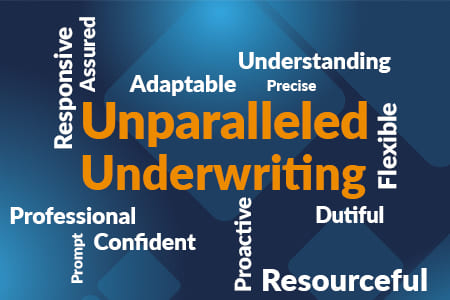A bad credit buy-to-let mortgage allows property investors to acquire funds, despite having CCJs, IVAs, bankruptcies or other credit issues on their records.
Latest Case Studies
A First-Time Landlord Requires Careful Assessment
Read case studyAddressing How a Shortfall Would Be Covered for a BTL Investment
Read case studyDelivering Auction Finance Quickly for a First-Time Landlord
Read case studyGoing Through the Details for a Challenging BTL Investment
Read case studyHelping a Client Recover from Mortgage Arrears on a Buy-to-Let Property
Read case studyHelping a First-Time Landlord with a Multi-Unit Freehold Property Purchase
Read case studyHelping a Landlord with Tenants in Situ Cover an Existing Charge
Read case studyInternal Teamwork for a Complicated Deal with Multiple Properties
Read case studyProviding a Way Forward for a BTL Investor with Missed Payments
Read case studyReturning Offshore Borrower Looking to Overcome Tight BTL Deadlines, with Speed and Security
Read case studySpecialist Finance Options for Planning Permission Difficulties
Read case studyThe Tools at Our Disposal to Help with LTV Limits and Tricky Business Plans
Read case studyUsing Rolled-Up Interest to Boost the ICR and Find a Way Forward
Read case studyBad Credit Buy-To-Let Mortgages
Our tracker and fixed rate Buy-to-Let (BTL) mortgages supports expanding landlords from all backgrounds, including those with a poor credit history. Many property investors will likely struggle to attain a buy-to-let mortgage with bad credit on the high street. But with our commitment to flexibility, we’re able to serve investors with a range of potential financial issues to their name.
Having a poor credit history will not automatically prevent you from accessing our BTL mortgages. We’re happy to hear from those who may have CCJs, IVAs, bankruptcies and more on their records.
Buy-To-Let Mortgages for Bad Credit –
All you need to know:
How do specialist mortgages work?
A BTL mortgage provides landlords with funds for a property they let out to a 3rd party in return for rental income. Typically, this includes single persons, families, student housing, a short-term let like an Airbnb, and more.
Most buy-to-let mortgages are interest-only; meaning you pay monthly interest on the amount. You need to pay off the capital borrowed at the end of the term.
This is usually done through a range of exit strategies. This could include selling the buy to-let property, using savings to pay off the debt, or arranging long-term finance with another lender.
Across our products, we assess applicants with the real financial world in mind. We understand how the wider economy can take a toll on your finances or business. We feel this shouldn’t derail your buy-to-let property investment plans.
Our mortgage underwriting process focuses on a case in its entirety. Meaning, we don’t assess affordability just on rental income. But we also consider the overall A&L, accessible wealth, and any surplus income available to cover ongoing costs.
Both our tracker and fixed rate buy-to-let specialist mortgages for bad credit can take advantage of many unique tools to boost your ICR. This includes rolled up or deferred interest payment plans. We also offer top-slicing on all BTL products.
Depending on the product, our mortgages have up to three tiers that can accommodate different kinds of complexities of your investment.
We can work with first-time landlords through to experienced professionals. As such, we’re used to seeing “teething issues” in an investor’s initial steps into the market. We also deal with the more complex issues that may afflict seasoned landlords.
With diversified funding lines behind us, and a proven track record of delivering loans quickly and efficiently, we have confidence to provide investors with large loans for a range of assets. Our bad credit buy-to-let mortgages can stretch to £10m at up to 75% LTV for investments in holiday lets, unlimited HMOs, and 30-unit MUFBs among others.
Our buy-to-let mortgages for bad credit clients have the same term length for our “regular” mortgages – up to 25 years. They can also present you with the possibility to leave earlier, providing you with optionality despite any poor credit history.
Our bad credit buy-to-let mortgages are available for overseas investors – including individuals or companies. We’re aware of all the red tape that foreign nationals may have faced in trying to access the UK market. We can adapt to overcome these issues where needed.
Can I get a mortgage when I have adverse credit?
It might be difficult for you to obtain a mortgage from mainstream lenders. However, a specialist lender like Market Financial Solutions is a lot more flexible assessing lending criteria.
Our BTL finance caters for clients with adverse credit. Meaning we can take into account:
- Missed mortgage or credit card payments
- Personal loan payments
- County Court Judgments (CCJs) & Defaults
- Bankruptcy/defaults/Debt Relief Orders (DRO)
We assess every one of our cases on its own merits. We will never dismiss a case without giving it a fair hearing first.
What is the deposit for bad credit Buy-to-Let mortgages?
Regardless of your circumstances you can apply for buy-to-let finance if you have at least a 25% deposit. Our products have up to three tiers to suit investors with a range of backgrounds and financial circumstances. Including missed payments, bankruptcies, and CCJs.
What is bad credit?
Bad credit is a broad term for a person who has struggled to pay their bills on time in the past. In the UK, a person’s credit history is monitored and assessed through 3 main credit reference agencies: Experian, Equifax, and TransUnion. While each has its own scaling system, generally, the closer your score is to zero, the worse your credit rating.
Buy-to-Let mortgages can be hard to obtain for those with credit issues. Mortgage lenders may fear those with a poor credit history will not be able to cover their debts in the future, making it a risky investment.
For that reason, bad credit Buy-to-Let mortgages are forms of specialised finance specifically catered to those with imperfect backgrounds.
Am I eligible?
We will often issue funding to borrowers with adverse credit and less-than-perfect backgrounds. For instance, we may provide bad credit Buy-to-Let mortgages to those who have opened new financial accounts recently, or have a debt relief order at play – both of which would dent your credit score. We also consider clients who had mortgage arrears in the past.
Do mortgages for those with bad credit cost more?
At Market Financial Solutions, we’re open to issuing Buy-to-Let mortgages to bad credit clients. But, to reflect the added risk, the interest rates involved, both on our fixed & tracker rate mortgages, may be slightly higher. Those with poor credit histories will likely fit into our higher tiers. These tiers factor in borrowers or properties with added complexity, such as:
- Large structures
- Expats
- Foreign nationals, or overseas companies
- Complicated financial or corporate setups
Is a credit check necessary?
Across all our products, we always perform a credit check on you to determine eligibility. There are usually “soft” and “hard” checks.
Soft checks are done to see if you may be suitable for a loan. These checks do not affect your credit record. Hard credit checks, once you pay fees and apply, will leave a “footprint” on your credit file to show you have applied for credit. As we progress, we might require hard checks.
When is bad credit too bad to get a Buy-to-Let mortgage?
This will vary from lender to lender. We will assess your case on its specific circumstances, rather than the applicable credit score. We will always do our best to lend, regardless of the difficulties put in front of us.
How much can I borrow with adverse credit?
Generally, with Market Financial Solutions, you can borrow £150k to £10m through our Buy-to-let mortgage for bad credit. The terms will depend on your specific circumstances which you and the underwriter agree on before the deal progresses.
Options for an exit strategy
Your Buy-to-Let mortgage’s rate and terms will be heavily dependent on your exit strategy, rental income, and background. We will want to understand how you plan to cover the loan, and the timeframe for completion. Often, exit strategies involve long-term refinancing, or the selling of an asset to cover the debt.


















